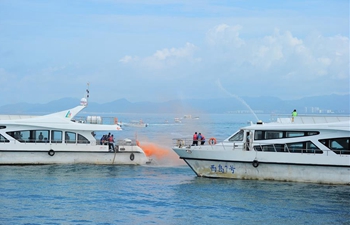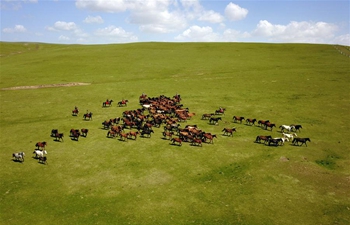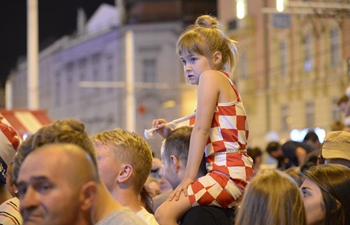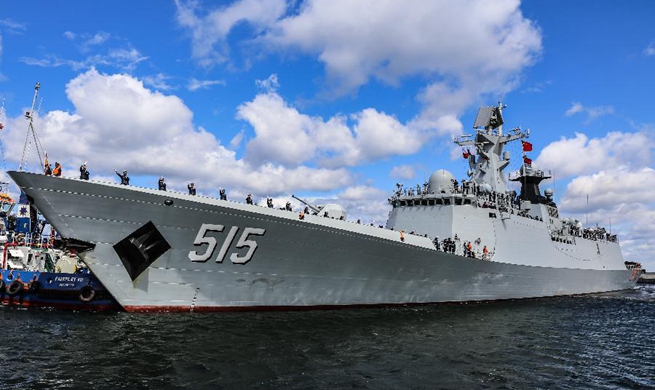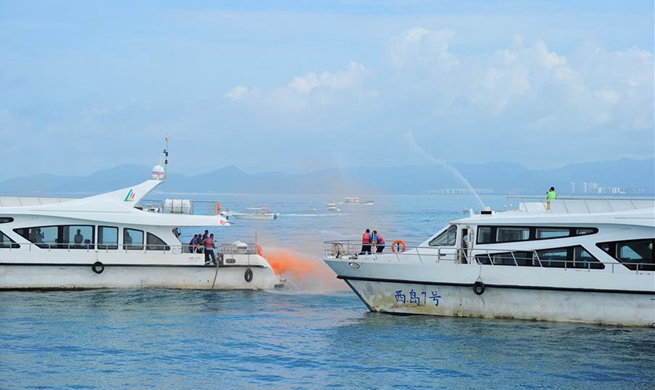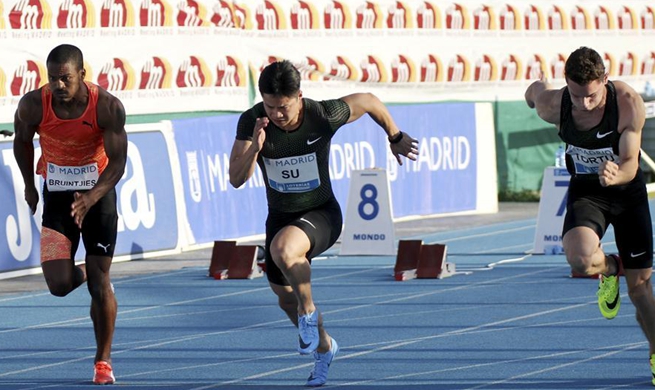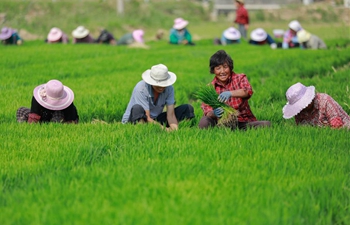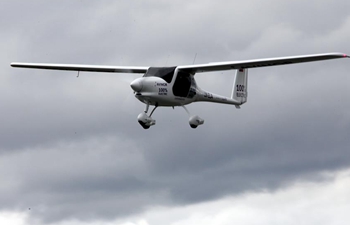DAMASCUS, June 23 (Xinhua) -- The Syrian army has started paving the way for a major offensive against an array of rebel groups in southern Syria by shelling and airstrikes, activists said Saturday.
The Syrian Observatory for Human Rights said the Syrian army heavily shelled rebel-held areas in the towns of Busr al-Harir and al-Hrak in the eastern countryside of Daraa Province in southern Syria Saturday morning.
The shelling was coupled with the aerial bombardment on Busr al-Harir and al-Lajat area amid ongoing battles between the army and the rebels in the al-Bustan area near al-Lajat northeast of Daraa, it said.
The Saturday's attack came a day after the Syrian warplanes carried out 33 airstrikes on rebel-held areas in Daraa, while the rebels also fired shells on government-controlled areas.
Also on Saturday, state news agency SANA said the Syrian army units are advancing in the eastern countryside of Daraa, dealing "precise strikes" on the positions of the rebels.
The Syrian army has been sending reinforcements as part of the anticipation for a wide-scale offensive on rebel-held areas in southern Syria, namely in the provinces of Daraa and Qunaitera, as well as the countryside of Sweida.
This tactic came after attempts to reach a deal with the rebels in southern Syria have apparently failed.
The pan-Arab al-Mayadeen TV said the Syrian forces are paving the way for the major offensive through dozens of artillery shellings targeting areas in Daraa over the past few days to shake the defense lines of the rebels in the area.
In tandem with the shelling, the Syrian government also attempted to establish reconciliation deals with the people in the western and eastern countryside of Daraa but did not achieve a breakthrough as local media accused the al-Qaida-linked Nusra Front of derailing the deals.
As many as 50 militant groups made up of 30,000 fighters are positioned in southern Syria and expected to face the Syrian army in its anticipated military assault.
The upcoming offensive could be launched from several directions, including the countryside of Sweida Province.
Experts believe the current military action on the rebels in Daraa aims to pressure them to accept a deal with the government.
It is worth mentioning that the areas in southern Syria are included in the internationally-backed de-escalation zone deal.
However, several rebel groups in the region are allies of the Nusra Front and the Islamic State (IS), which explains the government military move there.
The situation in the part of the country is expected to be inflammatory, particularly as the United States warned last month that it would take "firm and appropriate" measures "to protect the cease-fire in southern Syria if Syrian President Bashar al-Assad forces moved against the rebels there.
The situation in Daraa near Jordan, and Qunaitera near the Israel-occupied Golan Heights, has been subject to recent negotiations between Russia, Israel and the United States.
The deal between both sides was said to have focused on the withdrawal of Iranian-backed forces from areas in southern Syria, the evacuation of rebels from areas they control in Daraa and Qunaitera, and the return of the army to border areas with Jordan and Golan Heights.
While the talks have been going on since last month, the Syrian army has been sending reinforcements to launch the offensive should the talks fail.
The al-Watan newspaper said earlier this week that the Israeli-Russian talks had failed, with Assad accusing Israel of hindering the settlement for the situation in southern Syria as it supports the rebels in the area and prevents them from agreeing to leave.





